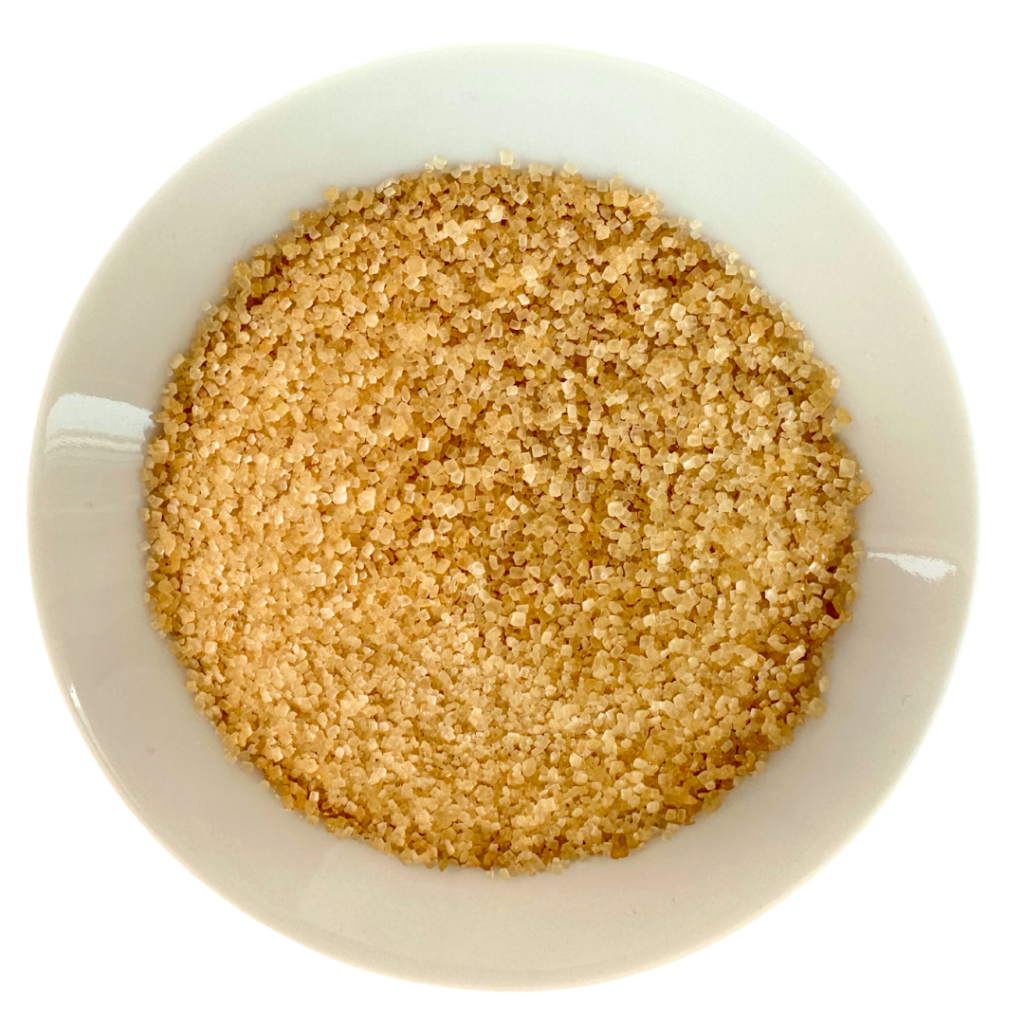Cane Sugar
x

Cane sugar is a disaccharide carbohydrate derived from sugarcane. Chemically, cane sugar comprises equal proportions of glucose and fructose. The sweetness level is denoted as 100 on the standard sweetness scale, setting a benchmark for evaluating the sweetness of all other sugars and sweeteners. Its solubility in water is profound, generating a clear, colorless solutions. Cane sugar’s crystalline structure is a defining characteristic, manifesting in the form of granulated or powdered sugar, the size of which plays a pivotal role in textural nuances within culinary preparations.
The benefits of cane sugar extend beyond its role as a sweetening agent. As a natural sweetener, it not only elevates the flavor profile of various food and beverage products but also contributes significantly to their texture and mouthfeel. In baking, cane sugar is a key ingredient, bestowing upon cakes, cookies, bread, and pastries the attributes of desirable browning, texture, and flavor. Furthermore, its applications span the vast landscape of confectionery, with candies, chocolates, and toffees, lending not only sweetness but also the formation of crystalline structures that define these products. The sugar exhibits the ability to act a preserving agent in jams, jellies, and fruit through osmotic pressure. The quantities of cane sugar employed in recipes vary according to the desired level of sweetness.
In conclusion, the chemical makeup, sweetness, solubility, and textural of Cane Sugar attributes its versatility across a multitude of food and beverage products. Beyond flavor enhancement, it contributes to the sensory journey of culinary creations, enhancing texture and shelf life.
- Baking: In baking, cane sugar is a fundamental ingredient. Cane sugar enhances flavor, provides moisture retention, and contributes to browning and texture in baked goods.
- Confectionery: In confectionery products like candies, toffees, and chocolates, cane sugar can constitute a significant portion of the total ingredients, often ranging from 50% to 100% by weight. Cane sugar provides sweetness and structure to confectionery items, influencing texture, hardness, and mouthfeel.
- Beverages: Cane sugar sweetens beverages, improving their palatability and balancing flavors. In beverages, the amount of cane sugar can vary widely, depending on the desired sweetness level.
- Preserves and Jams: Cane sugar acts as both a sweetener and a preservative in Jams, helping to preserve the color, flavor, and texture of fruits while preventing microbial spoilage. Cane sugar is used in significant quantities, often forming a substantial portion of the recipe, usually 50% or more by weight.
- Desserts and Puddings: Cane sugar adds sweetness and helps achieve the desired texture in these desserts.
Benefits of using Cane Sugar:
- Sweetening Agent: It serves as a natural sweetener, enhancing the flavor and palatability of a wide array of food and beverage products.
- Texture Enhancement: Cane sugar contributes to the texture and mouthfeel of baked goods, confectionery items, and desserts, imparting characteristics such as moisture retention and tenderness.
- Preservative Properties: In certain applications, cane sugar acts as a preservative, extending the shelf life of jams, jellies, and fruit preserves by inhibiting microbial growth through osmotic pressure.
- Calories: 2 calories per gram
- Recommended Daily Intake: There is no specific recommended daily intake for Cane Sugar
- Sweetness: The sweetness level is 100% on the standard sweetness scale
x
x
x
x
x

j
j